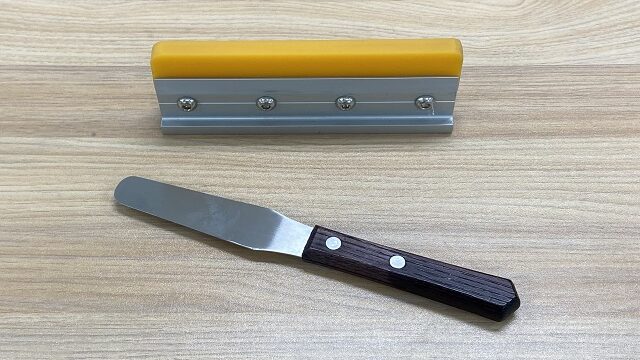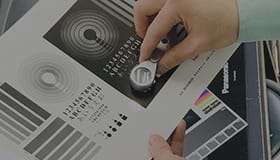Screen Printing troubleshooting
Screen Printing Q & A [ Equipment ]
For those who need help with screen printing equipment.

We would like to introduce how to deal with questions and troubles in equipment used for screen printing.
1.What tools are required for screen printing?
The tools used in screen printing are specialized tools except for equipment and have no versatility. It is necessary to select according to size, shape, accuracy, quantity, and production volume required by the customer.
Printing machines, drying machines (including UV irradiation machines), squeegee polishing machines (for maintenance), and stirring machines are required.
In addition, measuring instruments, spatulas (for inks), rubber gloves and goggles (work protective equipment), cleaning solvents, waste cloths, etc. are required as equipment.
| Item | Solution |
|---|---|
| Printing |
It is necessary to have the right machine, stencil, ink, squeegee, doctor, substrate and ink (solvent type/UV Curing) to meet the printing specification. |
2.What type of squeegee is suitable?
Squeegee rubbers for screen printing are available in flat type, sword tip, various hardness, and resistance to solvent and UV according to each manufacturer. Individual selection is necessary according to design, printing condition and various types of inks.
| Item | Solution |
|---|---|
| Printing |
|
3.Why do you choose the rubber hardness of squeegee depending on the printed material?
Differences in hardness are necessary because the finish of the printed material varies depending on characteristics of design (solid, letter, fine line, dot), characteristics of ink (functionality), and characteristics of stencil (mesh size, tension).
| Item | Solution |
|---|---|
|
Substrate |
|
|
Ink |
|
|
Printing |
|
4.What type of stencil do you need to prepare?
Stencil need to be individually selected for the desired product, including size, mesh selection, accuracy, emulsion (one- or two-component), ink layer thickness, mesh tension, and relationship with the ink to be used, all of which are important factors.
| Item | Solution |
|---|---|
|
Stencil |
|
5.Is there anything to keep in mind when selecting a scraper.
Scrapers (doctor blades) are generally set up by machine manufacturer, exclusively for aluminum or stainless-steel materials in shape and length. Please contact the machine manufacturer for custom made products.
| Item | Solution |
|---|---|
| Printing |
|

